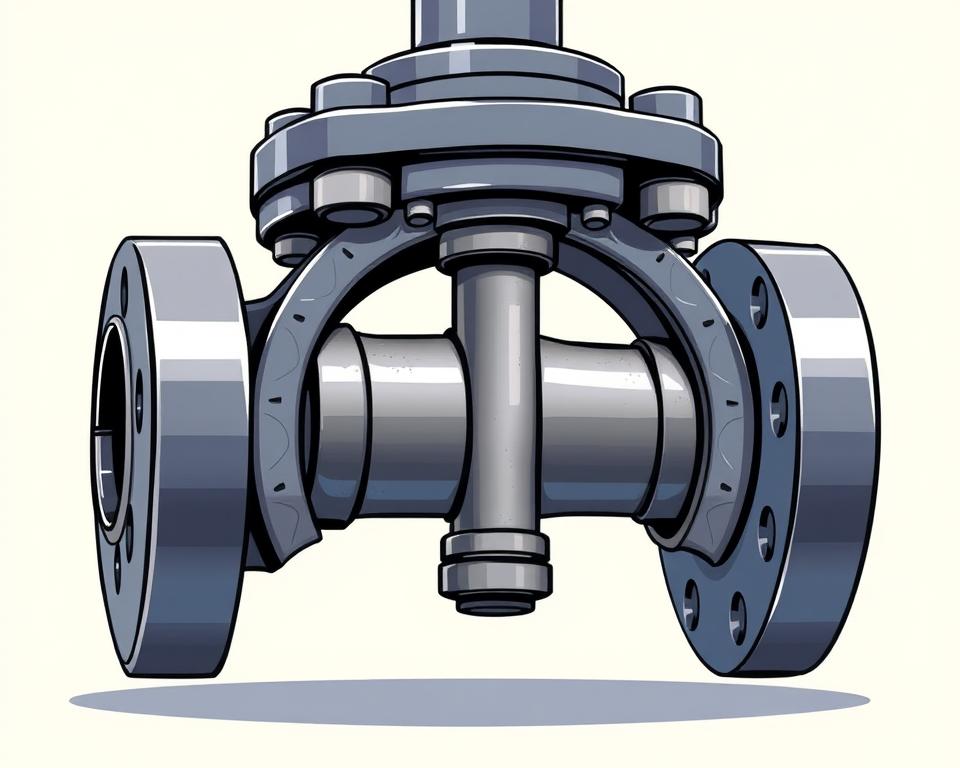Cast Iron Gate Valves: Features, Benefits, and Uses
Might one quality valve shrink maintenance time and keep water networks running longer?
I produce and stock Cast Iron Gate Valve Manufacturer at Yaxing Valve, and I back their performance and support for U.S. customers. This line is engineered for longevity in waterworks and light-industrial systems.
Each gate valve has a robust iron body, a machined wedge path, and straightforward handwheel operation. This yields trustworthy isolation, serviceable upkeep, and steady performance in buildings, fire mains, and utility distribution lines.
I support specifiers with fast submittals and transparent details: sizes, end connections, pressure classes, and accessories. My site also keeps account preferences and carts with cookies so repeat orders are simple.
If you need a practical replacement or a cost-effective option for new projects, compare my cast iron gate benefits with your current hardware to spot life-cycle value and practical fit.
Why Yaxing Valve Cast Iron Gate Valves Deliver Reliable Flow Control
I personally review each product at Yaxing Valve, allowing confident recommendations for tough U.S. sites.
Built for industrial performance with a robust cast iron body
Every valve features a strong cast-iron body that resists load-induced deformation. Accurate machining and metal-to-metal seats deliver tight shutoff when it matters.

Designed to maximize flow with minimal pressure drop
A streamlined flow path cuts turbulence and pressure drop. As a result, pumps run more efficiently and energy use declines across the system.
- Dimensions and testing are validated to ANSI norms and internal criteria.
- I finish stem, wedge, and bonnet interfaces to cut friction and keep handwheel torque steady over years of use.
- I balance body thickness for durability and installer-friendly weight.
- Documentation lists tests/standards so purchasing can wrap orders quickly.
| Key Feature | Benefit | Tech Note |
|---|---|---|
| Cast-iron body | Strong structural integrity | Dimensional stability verified |
| Optimized gate geometry | Lower pressure loss | Supports pump efficiency |
| Stem & handwheel finish | Low-effort operation | Steady torque over service life |
| Spec documentation | Speedier submittal clearance | ANSI-aligned test reports |
Cast Iron Gate Valves—Materials, Design Details, and Key Performance
I break down body, sealing, and stem options to simplify selection and ordering.
Body, bonnet, and wedge materials
The material stack includes a cast-iron body/bonnet, a precision-machined wedge, and metal-to-metal seating for dependable isolation across water service and general industry.
Stem/Handwheel configurations
For compact layouts, I offer non-rising and inside-screw stem options. Every thread form and packing scheme is listed in the product details.
Performance limits and standards
I publish qualified pressure and temperature ranges and align end connections to common ANSI standards to help engineers confirm fit without additional drawings.
- Interface between stem and handwheel tuned for consistent torque.
- Optimized internals minimize pressure loss through the gate.
- Series codes with submittal-ready specs shorten ordering cycles.
| Item | Construction | Limit | Comments |
|---|---|---|---|
| Body & Bonnet | cast iron | Class 125/approx. 150 psi | ANSI flange dimensions; welded or bolted |
| Valve wedge | Machined alloy | −20°–180°F range | Metal-to-metal seating, low headloss finish |
| Valve stem | Compact NRS/inside-screw | — | Thread/packing details in datasheet |
| Series | YX-100 / YX-200 | 2–12 inch range | Clear part numbering for quick bids |
Modern Applications, Install, and Operation
I help contractors and owners place these valves where they perform best in modern loops. My goal is to make selection, installation, and operating checks straightforward so crews finish commissioning without call-backs.
Applications in waterworks, buildings, and general industry
Select full-port units for low restriction across long mains, service feeds, and bypass lines.
In mechanical rooms and industrial loops, I prefer non-rising stem or inside-screw designs when vertical space is tight.
Install best practices
Protect the valve body during handling; lift at rated points and avoid flange stress. Verify end alignment before final torque to avoid leaks and distortion.
Select compatible gaskets, torque in a cross pattern, and space supports to prevent line sag.
Operation & maintenance notes
Set the handwheel for comfortable access and verify free stem/handwheel movement after packing adjustments.
Perform periodic torque checks under pressure, inspect the wedge and packing, and confirm the pressure/temperature range against your media. Capture tag IDs in your account and link CMMS work orders.
| Category | What to Do | Timing | Outcome |
|---|---|---|---|
| Application selection | Use full-bore on mains; inside-screw/NRS in tight spots | Design phase | Lower headloss; space savings |
| Handling/installation | Lift properly, align, then cross-torque bolts | Field install | Prevents leaks and flange distortion |
| Commissioning checks | Verify handwheel feel; test under pressure | Commissioning and routine | Stable operation with reliable shutoff |
| Maintenance records | Tag valves and link to account/CMMS | Throughout lifecycle | Quicker parts tracking/replacement |
Correct handling/commissioning extends service life and keeps Resilient Seated Gate Valve performing and looking like new.
Specify the Right Iron Gate Valve with Me at Yaxing Valve
Send line size, pressure, and flow targets so I can match the right series/type to your duty and temperature envelope.
My concise checklist speeds approvals: end type, inside-screw vs non-rising, and handwheel orientation. I also capture stem/handwheel and screw details for clear install guidance.
Check the image gallery for high-resolution views with layouts showing clearance and operator reach. Make an account to save specs, tag valves, and link drawings plus a one-page field PDF.
Ask for a quick quote and I’ll confirm availability, lead times, alternates, and help you complete the order while you view the gallery. We only use cookies to keep your session and cart active.
